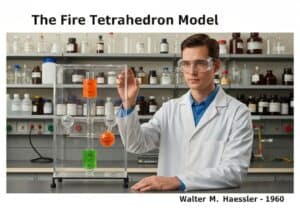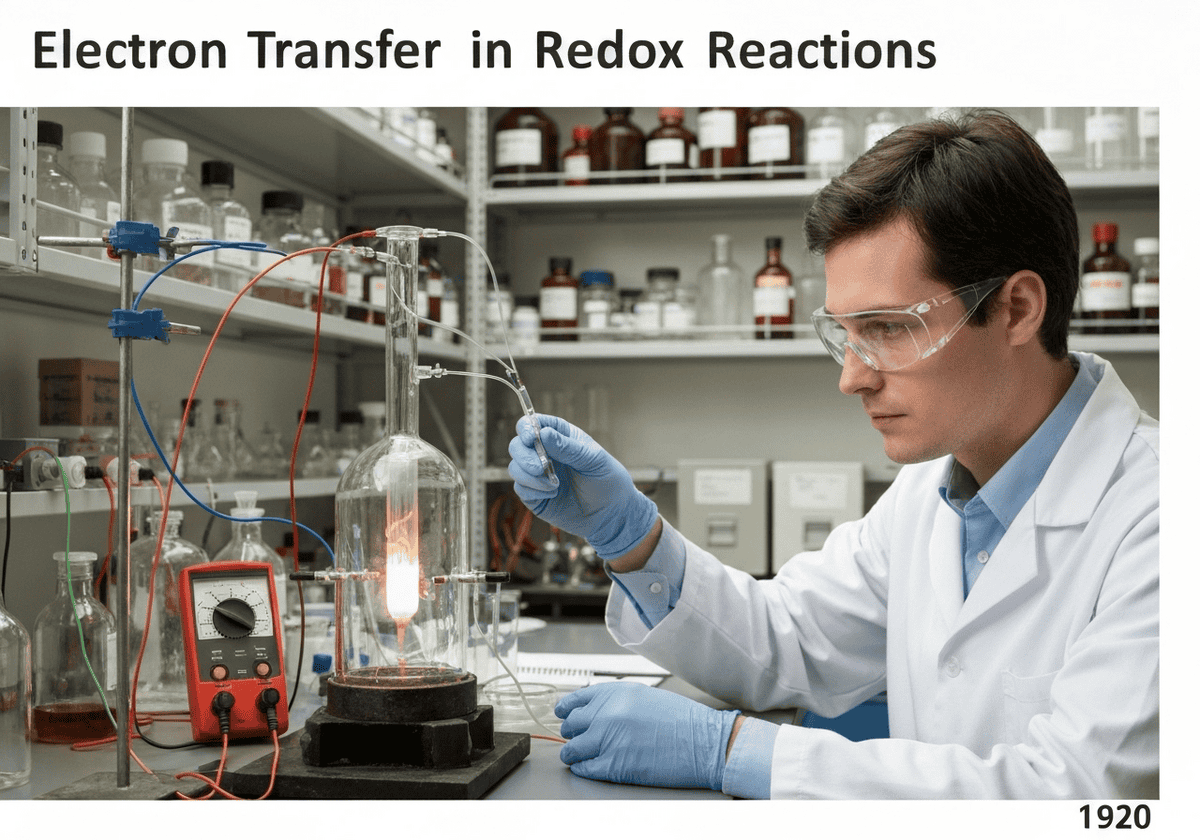氧化还原(还原-氧化)反应涉及化学物质之间的电子转移。一种物质发生氧化(失去电子),而另一种物质发生还原(获得电子)。这两个过程总是同时发生。失去电子的物质是还原剂,获得电子的物质是氧化剂。这一基本概念是电化学和许多生物过程的基础。


(generate image for illustration only)
氧化还原(还原-氧化)反应涉及化学物质之间的电子转移。一种物质发生氧化(失去电子),而另一种物质发生还原(获得电子)。这两个过程总是同时发生。失去电子的物质是还原剂,获得电子的物质是氧化剂。这一基本概念是电化学和许多生物过程的基础。
The concept of redox reactions evolved from early studies of combustion. Initially explained by the phlogiston theory, Antoine Lavoisier correctly identified the role of oxygen in combustion in the late 18th century, laying the groundwork for oxidation. However, the modern definition is centered on electron transfer, a concept that became clear only after the discovery of the electron by J.J. Thomson in 1897. The mnemonics ‘OIL RIG’ (Oxidation Is Loss, Reduction Is Gain) or ‘LEO the lion says GER’ (Lose Electrons Oxidation, Gain Electrons Reduction) are commonly used to remember the definitions.
In any redox reaction, the total number of electrons lost by the reducing agent must equal the total number of electrons gained by the oxidizing agent, adhering to the law of conservation of charge. For example, in the reaction of zinc metal with copper(II) ions, [latex]Zn(s) + Cu^{2+}(aq) rightarrow Zn^{2+}(aq) + Cu(s)[/latex], zinc atoms are oxidized to zinc ions by losing two electrons, while copper(II) ions are reduced to copper metal by gaining two electrons. Here, zinc is the reducing agent and copper(II) is the oxidizing agent. This simple principle is foundational to countless natural and industrial processes, from the rusting of iron to the generation of electricity in a battery.
迎接新挑战
机械工程师、项目、工艺工程师或研发经理
可在短时间内接受新的挑战。
通过 LinkedIn 联系我
塑料金属电子集成、成本设计、GMP、人体工程学、中高容量设备和耗材、精益制造、受监管行业、CE 和 FDA、CAD、Solidworks、精益西格玛黑带、医疗 ISO 13485
氧化还原反应中的电子转移
(如果日期不详或不相关,例如 "流体力学",则对其显著出现的时间作了四舍五入的估计)。
相关发明、创新和技术原理
{{标题}}
{%,如果摘录 %}{{ 摘录 | truncatewords:55 }}
{% endif %}